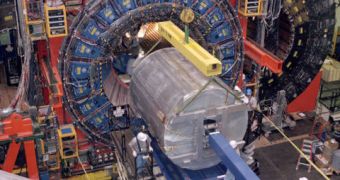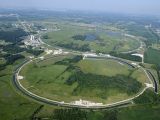Ever since the Large Hadron Collider (LHC) was under construction, the Batavia, Illinois-based Fermi National Accelerator Laboratory (Fermilab) began to work extra-hard on finding the elusive Higgs Boson. This elementary particle would complete and firmly prove the Standard Model in physics, which now features two classes of particles, leptons and quarks, alongside “force carriers” known as gauge bosons. Only powerful accelerators could hypothetically discover the particle, if it exists, and the LHC was especially built for this objective.
However, in its initial test runs, the large, CERN-operated accelerator malfunctioned and entered a period of extensive repairs, which are due to be completed this fall. It won't be until 2011 that the LHC will become capable of firing beams of protons at each other in full force, so its American counterpart, despite its smaller size and lesser power, has more chances of actually finding the Higgs Boson in its own experiments. “The Tevatron definitely has a chance,” expert Greg Landsberg, from the Brown University, in Providence, Rhode Island, who is also an LHC detector scientist, adds.
Experts at Tevatron say that, by early 2011, their accelerator would have allowed them to collect sufficient amounts of data to either confirm, or completely rule out the existence of the Higgs. The announcement was made last week in Hamburg, Germany, during the Lepton Photon conference. It would be the job of the LHC and CERN to play catch-up with Fermilab and the Tevatron, the physicists also told the audience. They also said that the LHC's size could counter-intuitively make it harder to detect the elusive Higgs, NewScientist reports.
Because of the enormous energies it can produce, the LHC is more likely to actually produce the Higgs particles than the Tevatron. However, the same energies could also produce a vast number of other heavy particles, which mimic the sought-after boson. Distinguishing between them and the actual target would be a very laborious process, the experts added. The American team acknowledged, however, that the European accelerator was far better equipped to find dark matter, something the Tevatron hadn't been built for.

 14 DAY TRIAL //
14 DAY TRIAL // 
